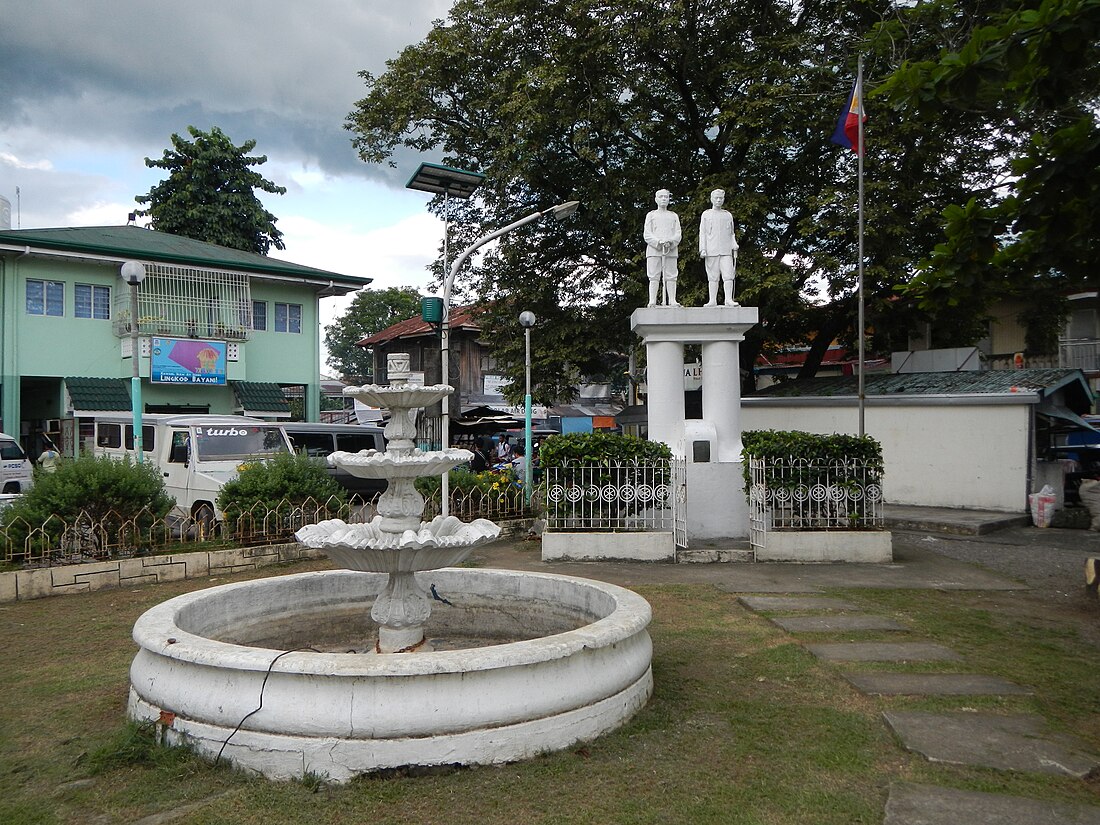Top Qs
Timeline
Chat
Perspective
Maragondon
Municipality in Cavite, Philippines From Wikipedia, the free encyclopedia
Remove ads
Maragondon, officially the Municipality of Maragondon (Tagalog: Bayan ng Maragondon), is a municipality in the province of Cavite, Philippines. According to the 2020 census, it has a population of 40,687 people.[3] The town is famous for its bamboo crafts, Mounts Palay-Palay–Mataas-na-Gulod Protected Landscape which includes Mount Pico de Loro, and various ancestral houses and structures important to Philippine history and culture such as Maragondon Church and the execution site and trial house of national hero Andres Bonifacio.[5][6]
This article needs additional citations for verification. (October 2021) |
Remove ads
Maragondon is 44 kilometers (27 mi) from Imus, the provincial capital, and 54 kilometers (34 mi) from Manila, the national capital.
Remove ads
Etymology
The name Maragondon is a Spanish approximation of the Tagalog word maragundong or madagundong, which means "having a rumbling or thunderous sound".[7] This refers to the noise coming from the Kay Albaran river in the village of Capantayan. This was initially the place on which the town was to be built. However, due to the floods caused by the frequent overflowing of the river, the town was later relocated to its present site.
Remove ads
History
Summarize
Perspective

Incidentally, Maragondon has three foundation dates, namely:
- 1611 when the Franciscan Fathers from Silang established their first visita or chapel;
- 1690, the fundacion ecclesiastica or founding of the regular parish by the Jesuits, dedicating it to Our Lady of the Assumption;
- 1727, the fundacion civil, when the original barrio of Maragondon was separated from Silang during the administration of the Recollects and converted into an independent municipality with Gregorio Silvestre as the first gobernadorcillo.
Maragondon belonged to the corregimiento of Mariveles (now part of Bataan) until 1754, when Spanish governor general Pedro Manuel de Arandia (1754–1759) abolished the politico-military administration and restored Maragondon to Cavite province. Alongside Silang, the town's territory was very large during its early decades.
In the second half of the 19th century the towns of Ternate, Magallanes, Gen. Emilio Aguinaldo (formerly Bailen), Alfonso, and Naic were mere barrios of Maragondon. Ternate was the first town to attain full independence on March 31, 1857, under an agreement signed by Tomas de Leon, Felix Nigosa, Pablo de Leon, Florencio Nino Franco and Juan Ramos in behalf of the people of Ternate.
Furthermore, Bailen (now Gen. Aguinaldo) and Alfonso seceded from Maragondon in 1858. Naic then severed as a town in 1869. Magallanes was the last of the villages to attain independence, having been founded on July 15, 1879, under an agreement signed by Crisostomo Riel representing Maragondon, and by Isidro Bello and company representing Magallanes.
During the Philippine Revolution on May 4, 1897, revolutionary leader Andres Bonifacio and his brother Procopio Bonifacio were tried and sentenced to death by a military court that convened in the house of one of the town's prominent personalities, Teodorico Reyes, following the Bonifacios' arrest for defying the authority of Emilio Aguinaldo. They were then held at Maragondon Church until May 10, 1897,[8] when they were executed in the Maragondon mountain range.[9]
On September 2, 1952, amid political violence in Cavite, the town's mayor, Severino Rillo, was killed along with the town's police chief and several other police officers in the Maragondon Massacre committed by gangster Leonardo Manecio also known as "Nardong Putik", who committed the killings on orders from local politicians.[10]
Remove ads
Geography
Summarize
Perspective
Barangays
Maragondon is politically subdivided into 27 barangays, as indicated below. [11] Each barangay consists of puroks and some have sitios.
- Bucal 1
- Bucal 2
- Bucal 3A
- Bucal 3B
- Bucal 4A
- Bucal 4B
- Caingin Pob.
- Garita 1A
- Garita 1B
- Layong Mabilog
- Mabato
- Pantihan 1 (Balayungan)
- Pantihan 2
- Pantihan 3 (Pook na Munti)
- Pantihan 4 (Pulo ni Sara)
- Patungan
- Pinagsanhan A (Ibayo)
- Pinagsanhan B (Ibayo)
- Poblacion 1A
- Poblacion 1B
- Poblacion 2A
- Poblacion 2B
- San Miguel A (Caputatan)
- San Miguel B (Caputatan)
- Talipusngo
- Tulay Silangan (Mabacao)
- Tulay Kanluran (Mabacao)
Climate
Demographics
In the 2020 census, the population of Maragondon was 40,687 people,[3] with a density of 250 inhabitants per square kilometer or 650 inhabitants per square mile.
Remove ads
Government
Elected officials
The following are the elected officials of the town elected last May 09, 2022, serving a term until 2025:
Remove ads
Images
- Our Lady of the Assumption, Maragondon
- Maragondon Parochial School
- Iglesia Filipina Independiente (Aglipayan) Parish of the Virgin of the Assumption in Maragondon, Cavite.
- Our Lady of the Assumption Parish Church
- Welcome arch
- Barangay Poblacion 1-B
- Public market
- Bonifacio Trial House
- Mt. Pico De Loro Monolith
- Silyang Bato of Mt. Marami
- Kaybiang Tunnel
References
External links
Wikiwand - on
Seamless Wikipedia browsing. On steroids.
Remove ads

















